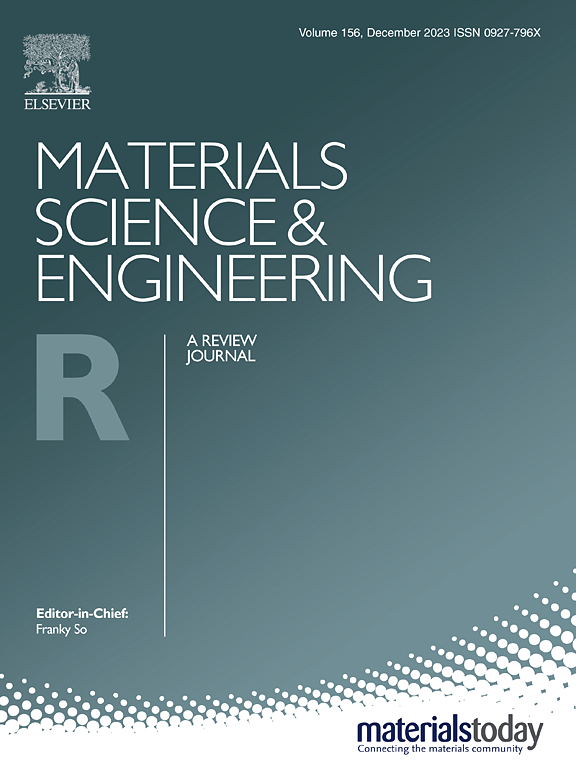Galvanic cell metasurface modulating electron transfer on polymer implants for sterilization and osteointegration
IF 31.6
1区 材料科学
Q1 MATERIALS SCIENCE, MULTIDISCIPLINARY
引用次数: 0
Abstract
Bacterial infections challenge clinical medicine, and “electrostimulation” and “catalytic therapy” offer novel antibacterial strategies beyond antibiotics and metal ions. Herein, a bimetallic galvanic cell metasurface composed of biosafe zirconium (Zr), titanium (Ti), and tantalum (Ta) is fabricated on polymer implants using a developed plasma modification system (PIII&PHS). The galvanic cell metasurface harbors an asymmetric charge to modulate electron transfer, and enables “electron beam flow” to surpass the reactivity limits of metals. Remarkably, the galvanic cell metasurface adeptly modulates electron transfer to reduce the energy supply and triggers the bacterial reactive oxygen species (ROS) imbalance to cause death. The antibacterial mechanism is validated, and the universality is demonstrated. Rat osteomyelitis, cranial defect, and rabbit femoral defect models corroborate the excellent osteointegration ability of the galvanic cell metasurface. The results reveal that incorporating biosafe bimetallic asymmetric charges into a metasurface is a novel and effective strategy for designing antibacterial medical materials.
用于灭菌和骨整合的聚合物植入物上的原电池超表面调制电子转移
细菌感染对临床医学提出了挑战,“电刺激”和“催化疗法”提供了超越抗生素和金属离子的新型抗菌策略。本研究利用已开发的等离子体修饰系统(PIII&;PHS)在聚合物植入体上制备了由生物安全锆(Zr)、钛(Ti)和钽(Ta)组成的双金属原电池超表面。原电池超表面含有不对称电荷来调节电子转移,并使“电子束流”超过金属的反应性极限。值得注意的是,原电池超表面巧妙地调节电子转移以减少能量供应,并触发细菌活性氧(ROS)失衡导致死亡。验证了其抗菌机理,证明了其普遍性。大鼠骨髓炎、颅骨缺损和兔股骨缺损模型证实了原电池超表面良好的骨整合能力。结果表明,将生物安全的双金属不对称电荷整合到超表面上是一种设计抗菌医用材料的新颖有效的策略。
本文章由计算机程序翻译,如有差异,请以英文原文为准。
求助全文
约1分钟内获得全文
求助全文
来源期刊

Materials Science and Engineering: R: Reports
工程技术-材料科学:综合
CiteScore
60.50
自引率
0.30%
发文量
19
审稿时长
34 days
期刊介绍:
Materials Science & Engineering R: Reports is a journal that covers a wide range of topics in the field of materials science and engineering. It publishes both experimental and theoretical research papers, providing background information and critical assessments on various topics. The journal aims to publish high-quality and novel research papers and reviews.
The subject areas covered by the journal include Materials Science (General), Electronic Materials, Optical Materials, and Magnetic Materials. In addition to regular issues, the journal also publishes special issues on key themes in the field of materials science, including Energy Materials, Materials for Health, Materials Discovery, Innovation for High Value Manufacturing, and Sustainable Materials development.
 求助内容:
求助内容: 应助结果提醒方式:
应助结果提醒方式:


